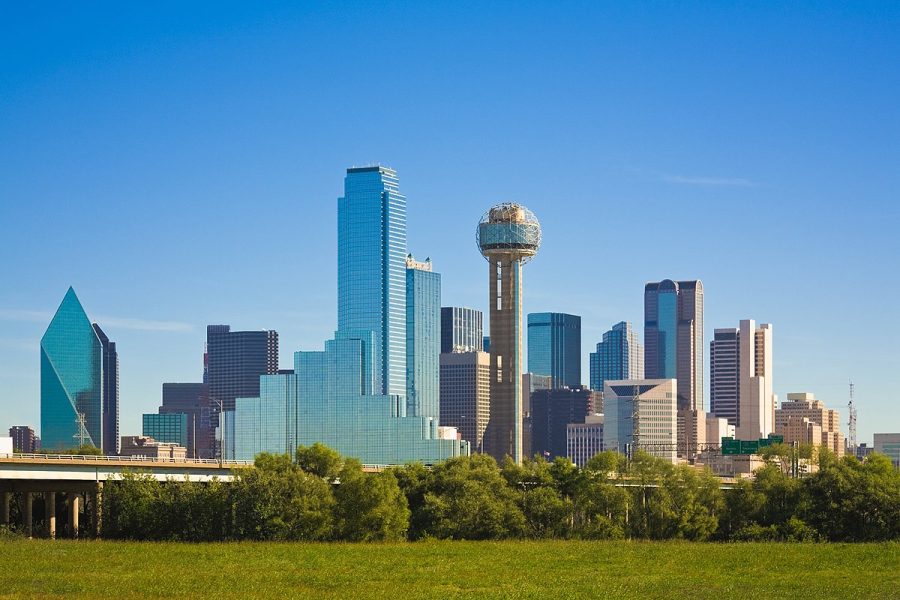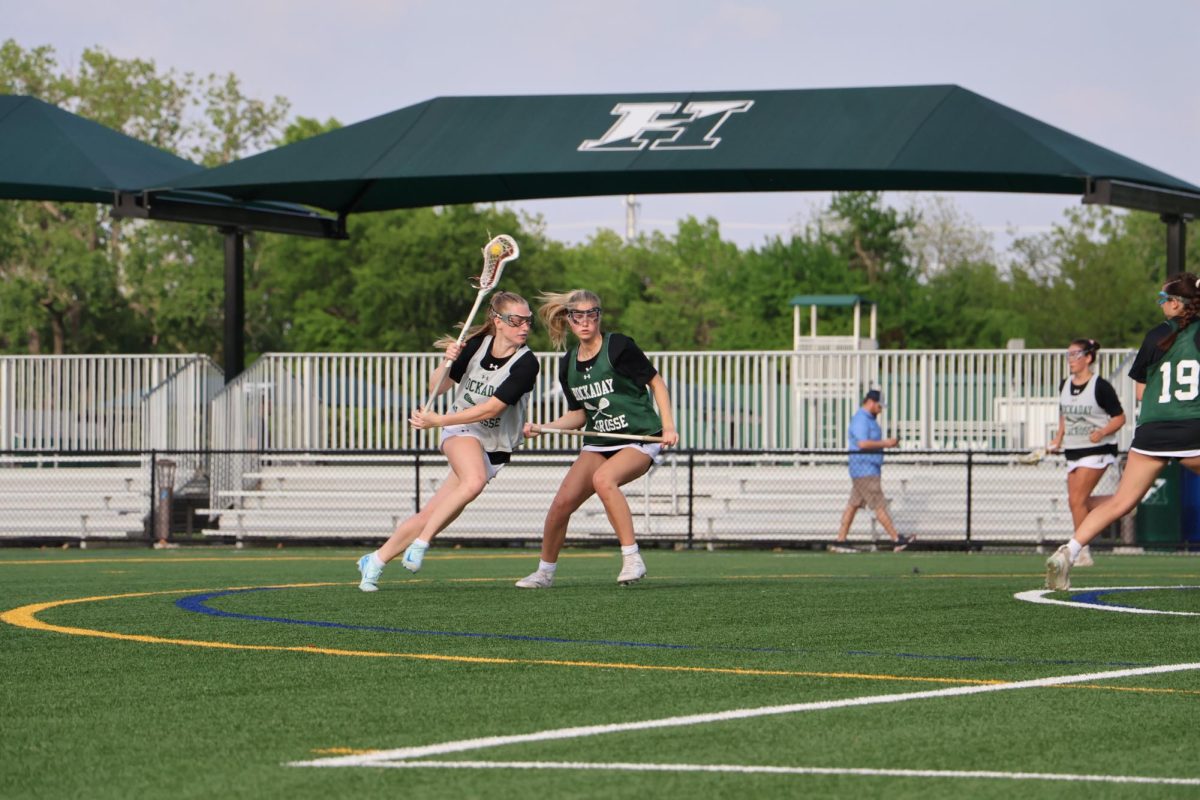Displacement in Dallas
Economic fluctuation disproportionally affects Dallas neighborhoods
Photo by Alana Botting via Flickr, Creative Commons Attribution- Share Alike 2.0 Generic license
March 28, 2023
What is displacement?
Today, neighborhoods in America’s major cities, including Dallas, do not look the same as they did 50 years ago, and, because of the increase in real estate prices, neither do the people who live in them. But what exactly is it that causes these changes?
“There is always, everywhere, going to be competition for scarce, desirable space,” said Dr. Cullum Clark, an economist at the George W. Bush Institute and SMU. “It’s easy to imagine more than one person or family wish to live in that space or do business in that space.”
Clark said this desire creates competition, and more competition means more demand to be in a particular space, causing housing prices to rise. This competition is a result of displacement in cities.
Displacement occurs when a neighborhood that has primarily been home to people making a low-to-moderate income starts to become more alluring to higher-income people. The wealthier people begin to buy homes or rent in those areas.
“If it’s all rental real estate, it drives up the rents since there’s more demand for space – maybe even to a degree that becomes attractive for developers to buy an apartment that was already there, demolish it and build a fancier complex,” Clark said. “Then, the people who were living in that building are told they have to leave since it’s gonna get demolished.”
Displacement also can be seen when higher-income people move into single-family homes in a neighborhood. Clark said they often choose to demolish existing homes to build bigger, more expensive ones that eventually raise the assessed values of each lot for property tax purposes.
Nobody is actively forcing current residents out of their homes; however, in the eyes of tax authorities, the value of their lot has gone up, and along with it their taxes. Clark said it can then become worth it to sell and leave rather than pay the tax they cannot afford or they see as too onerous.
The economic impacts of a displaced neighborhood eventually spread to areas in its vicinity, causing an overall increase in the cost of real estate throughout a city. According to a study done in the International Journal of Housing Markets and Analysis, an area close to a neighborhood that has experienced a large amount of displacement shows a 6% to 8% increase in housing prices.
Why displacement in is Dallas different
Dallas, like every major city in the United States., has experienced its fair share of displacement over the last few decades. However, Clark said the Dallas metropolitan area has actually experienced much less than most other big, relatively prosperous metropolitan areas.
“The reason for that is simply because conditions in the DFW metroplex were very favorable for building outwards,” Clark said. “The spread of the Dallas metropolitan area into the former countryside has created extremely fast-growing suburban cities.”
Newly built homes in places like Frisco and Plano appealed to more well-off residents who did not want to compete for scarce space in the city of Dallas, causing a flight to the suburbs and therefore outward growth of the city rather than displacement within it.
Clark said this is for both topographical reasons, meaning Dallas’ lack of oceans or mountains, and because of a favorable legal and policy environment for building in suburbs.
“In general, we’ve had wonderful success building a lot of new housing, including very rapidly growing suburban places that have taken a lot of the pressure out of what could have been a very high degree of displacement in lower income neighborhoods,” Clark said.
In spite of this, Clark said there is evidence demonstrating accelerated rates of displacement in Dallas from 2015 until COVID-19 hit. After the housing market recovered, however, people from places like California and New York started moving to the metroplex. Home prices, even in the suburbs, began to rise again at a quick pace.
“This happened in a number of cities around the country, and the evidence for displacement really accelerated in a pretty harsh way,” Clark said.
In South Dallas, specifically, demolition rates have risen in the past couple of years and are much greater than in the average Dallas neighborhood. Clark said this data shows developers are buying and destroying more “decrepit” homes in these neighborhoods to build higher-end houses, a prime example of the rising displacement rates in the city.
“Well-off people in Dallas aren’t completely ambivalent about where they live, so you’re likely to see the displacement gather speed in places and neighborhoods that have been relatively low-income and are close to job centers and schools,” Clark said.
What’s happening now
Since the begining of 2021, inflation rates have risen, causing a rise in interest rates. This leads to a decrease in investment due to the high prices.
“What we’ve seen in 2021 was a huge increase in inflation rates in the U.S. economy,” Clark said. “The Federal Reserve System has responded with an extraordinarily fast series of interest rate increases, increasing the Federal Funds rate from basically 0.25% at the beginning of last year, to four and a half percent now.”
These changes are reducing the number of people buying homes because the price of taking out mortgages is high. However, this effect is temporary and sales are sure to pick up once market prices adjust.
“The market will get accustomed to the new interest rates at some point, at least to some degree, so right now there’s a bit of a reprieve and from a public policy point of view,” Clark said. “There are a number of folks involved in government and the nonprofit sector and so forth that would like to see more robust displacement policy and also some support for the nonprofit sector.”
The relief period opens up the opportunity for anti-displacement policy to be developed.
“There’s great energy and momentum for at least starting to develop some policies,” Clark said, “so maybe over the next couple years, we can see a real significant change in city of Dallas public policies and in the nonprofit sectors and more engagement on the issue.”
Neighborhoods being affected
In Dallas, there have been neighborhoods flipping over for years now, changing from low income areas to high end real estate.
“The area that has experienced nearly total displacement – hardly any low income people living there anymore – is most broadly called Uptown,” Clark said.
He noted that when he was at school at St. Mark’s, this area was essentially low income housing only.
“Virtually every home at that period is now gone and replaced by higher-end real estate,” Clark said.
The displacement, however, is not over and what has been progressing over the last several years will continue in Uptown. Displacement also has migrated more recently to West Dallas.
“If you think of West Dallas, there’s this place close to the Trinity River and there are multiple bridges that you go across very quickly to be downtown or at UT Southwestern, a gigantic job center,” Clark said.
The easy access to downtown and job centers along the Interstate 35/Harry Hines corridor has attracted significant development, causing displacement in these areas.
“That area is always going to be very vulnerable to rapid displacement and that has gathered steam over the last handful of years, it would appear,” Clark said.
Areas likely to be affected in the future
Clark has observed the potential displacement in southern Dallas and Fair Park. The Cedars, a neighborhood south of Dallas, has had a relatively low population density in the past, but there has been a lot of recent development.
“Some of it actually is affordable housing, but some of it is luxury,” he said. “If you go past the Cedars, further south, it becomes a neighborhood that has historically housed Black families as well as those with overwhelmingly low income. Just over the last couple of years, you really saw a real pickup in the real estate activity that’s likely to result in a lot more displacement.”
He also said Fair Park is a place to watch. Although there has been very little new development in recent years, that is likely to change soon because developers have the area in their sights.
Currently Fair Park is stretches the definition of “park,” because it is not a desirable place for families in the neighborhood take their children or walk their dogs.
“On the contrary, they can see a whole lot of surface parking and high fences, and once inside an area when the State Fair is not going, nothing is happening,” Clark said. “If anything it might actually feel dangerous.”
A significant public sector investment is going on in Fair Park, which has the potential to make the area a more desirable place to live and increase competition for housing near the park.







